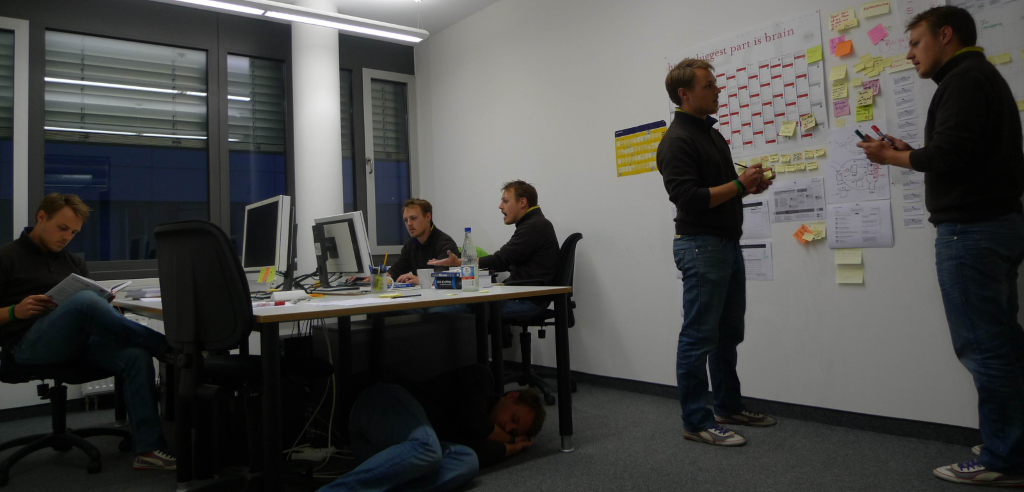
One of the artifacts prescribed by the Scrum framework is the daily Scrum, also known as "Daily Standup". Daily stand-ups are very useful, but come with a price tag. What if there was a better away?
Let's backtrack a little.
Here's a common Agile recipe: sit a whole team together, give them a heartbeat via regular meetings, encourage common working hours and finish by sprinkling a pinch of fairy dust. You now have an hyper productive team (almost).
This imposed continuity of space and time for the team(s) is indeed a very good start and certainly is valuable... if you are able to do it in a sustainable manner.
To the continuity of space could be opposed a remote work construct, but remote communication remains a hard nut to crack. While agility in a remote context with people that can handle the remoteness is incredibly powerful, being collocated tends to facilitate "spontaneous exchange" and "cross pollination of information". It's not hard to see why it is still the standard. Agility in a remote context is another topic, we'll keep it for a further article.
To the continuity of time could be opposed asynchronous communication and a pull (instead of push) model. This is obviously already the case for teams spread over multiple time zones, with the communication delays that unfortunately sometimes occur. Asynchronicity when it means delays and communication pains can be horrible for your project, but used sparingly it can certainly do wonders.
So let's come back to our Daily Scrum meeting. Every person who has been on a scrum team before know this argument: when should we hold our daily stand-up? Some early birds feel that 9 am is the very last acceptable moment whereas some other are still sound asleep at that time. There's rarely a satisfying answer for everyone... and we haven't yet spoken about arriving late or missing the standup...
What is the role of this meeting? It is certainly not to track down if Luke and Leia have only been surfing on the Internet yesterday and if Anakin is still working on his Death Star project he said he was "almost done with" two days ago. The role of the daily standup is to give everyone on the team a very condensed overview of where the team as a whole stands. This meeting is not a problem solving meeting as discussions are out of scope. The daily scrum helps identify who should be involved in the discussion, that will take place after the meeting.
New teams will tend to identify a lot of issues during the daily scrum as team members will tend to wait until the daily to speak their problems out loud. As the team matures, the communication will increase during the day and the daily will in turn become "just" a quick status update / commitment between team members.
In such a mature context, could this exchange take place asynchronously?
A few weeks ago, I read an article titled Standup against the Standup where Jon Evans describes the way a team could use Slack to perform an asynchronous daily standup. While I found the daily-standup-bashing format of the article quite unfortunate, I also found the idea very interesting.
Here's the idea: instead of performing a daily standup, standing, at a fixed point in time and space, let everyone answer the three questions asynchronously, as the first task they will do when they start working. Each new person that arrives can read what the earlier-birds answered and eventually react to it. People already deep in their work can remain in their flow until they chose to get out of it and read the new entries. No interruptions.
This sound really interesting, but raises a few concerns:
- What about the spontaneous remarks that invariably come up in a daily stand-up and end up revealing something about the team, the communication or the work?
- Where and when should further discussion happen and who should participate? Wouldn't an async setup tend to either leave people out of the discussion or increase communication delays waiting for key members?
Those points are certainly no deal breakers, but still, I'm wondering how a team depending on its maturity would handle it... any idea?
Cover image: Anatomy of my day, from myself (CC BY-NC-ND 2.0)


